#gongdaobei
Text

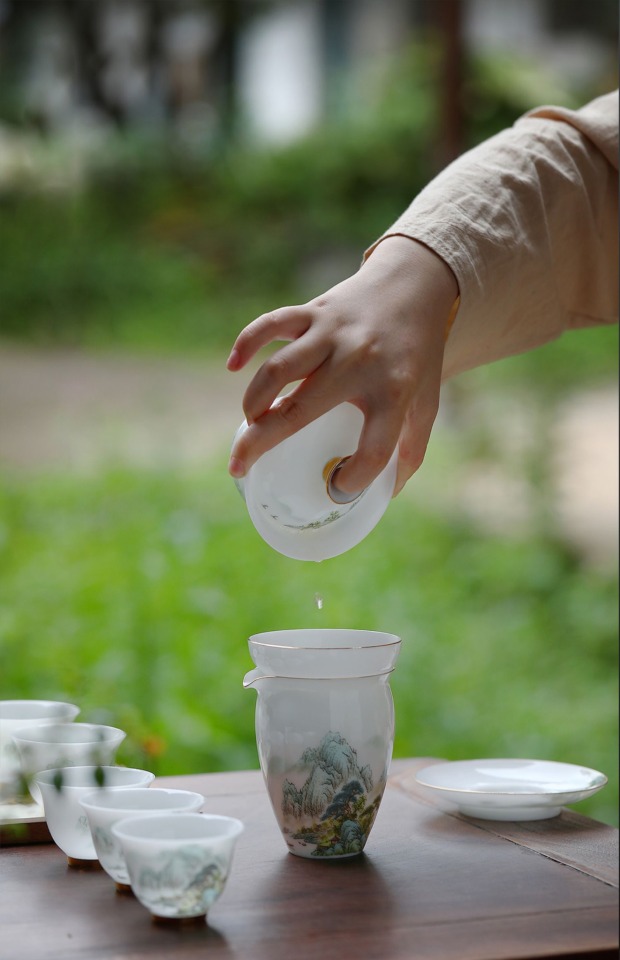
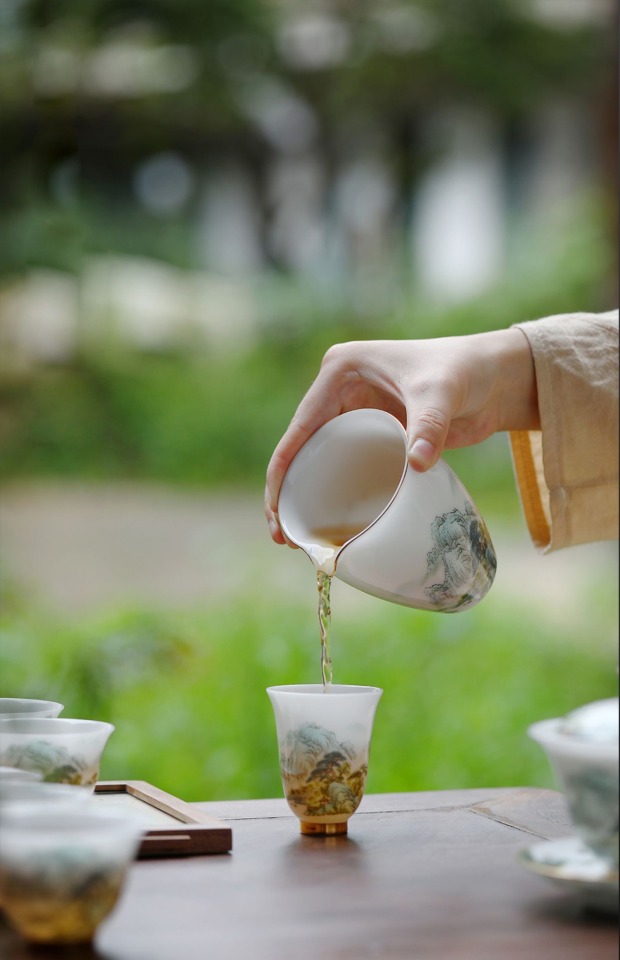
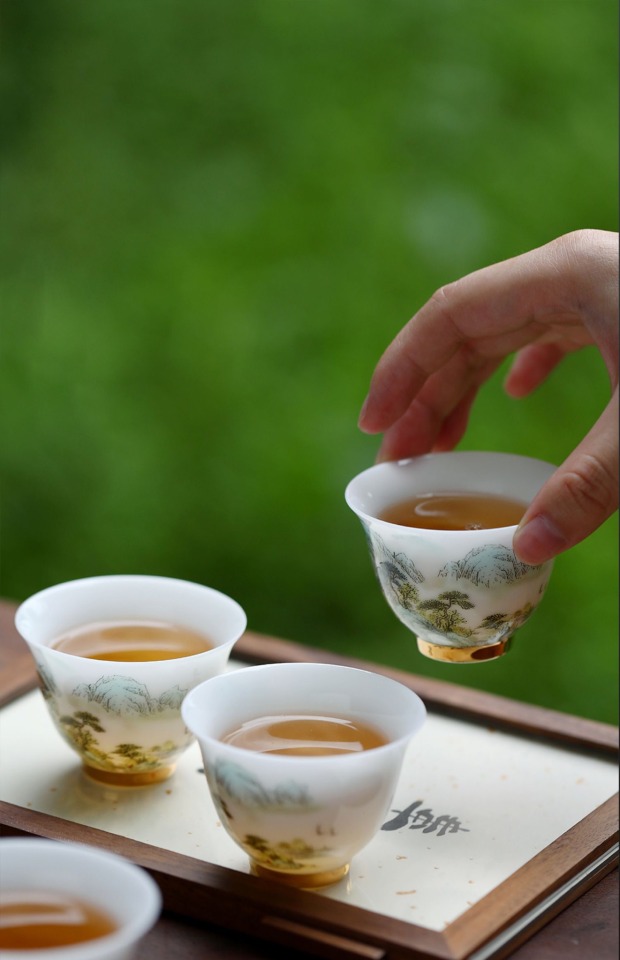


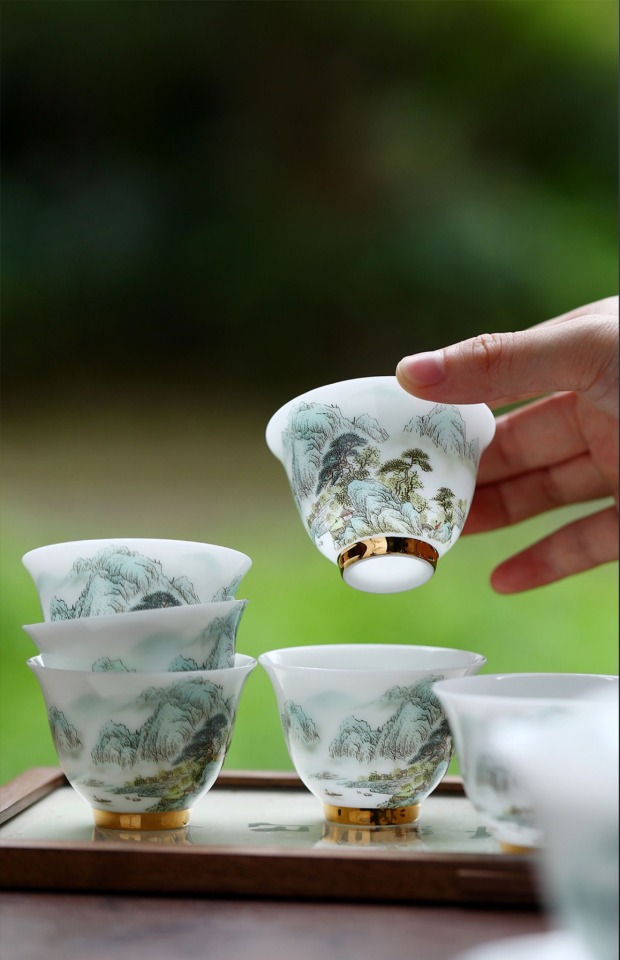
The view on the tea set and the exquisite and delicate tea on the table offer you the most relaxing and comfortable moments.
#morimatea#teacup#chaxi#tea#teatime#teatray#beautiful#gaiwan#gongdaobei#Dwelling in the Fuchun Mountains.#gaiwantea#hand painted#tealoversunite#craftsmanship#teawareaddict#gracefully#stunninglybeautiful#relaxingmood#relaxingmoments#fascinating#charmed#elegantdesign#amazing
14 notes
·
View notes
Photo

It came in an eight gram tin so pretty that I want to scrub the sticker off and save it for a century. Gaiwan hot to the touch. Put the leaves in. Shake, agitate, lift the lid. Inhale. Drink every last drop of the rinse feeling greedy. Round one. Round two. Rich iron red hue. Spent a couple hours over video and audio with the gentle souls who source this tea and live this life and breathe it. “Divine” I think I called it. And was immediately corrected. Nothing divine about it, she said. This tea is all about this earth. Truth. With the charcoal from the wood. With the hand of master teachers. Supervision ever present. Ever vigilant. Trees on barren cliffs, reaching skyward With the roots of what we source in direct opposition. The tin is black empty. The leaves are almost spent. The sensation in my body The buzzing on my tongue The sweetness in my throat The euphoric sense of peace Warm belly Flushed cheeks And Memories of plums plucked at peak ripeness. Almost as if we were doing gravity a favor. 2017 Old Bush Shui Xian from @shiftingsenses ———————————————— #yancha #rockoolong #oolong #oolongtea #oolongcha #wuyioolong #justinotherteablog #oolongaddict #gongfucha #gongfu #gongfutea #gongfuteaware #gaiwan #gongdaobei #teawares #teawareaddict #teaporn #gushu #teajournal #chaxi #chaqi #chado #cha #teadrunk #teasession #teameditation #tealover #teastagram (at On the Rocks) https://www.instagram.com/p/CgNgUiqOCzD/?igshid=NGJjMDIxMWI=
#yancha#rockoolong#oolong#oolongtea#oolongcha#wuyioolong#justinotherteablog#oolongaddict#gongfucha#gongfu#gongfutea#gongfuteaware#gaiwan#gongdaobei#teawares#teawareaddict#teaporn#gushu#teajournal#chaxi#chaqi#chado#cha#teadrunk#teasession#teameditation#tealover#teastagram
2 notes
·
View notes
Text



It looks like a climber is climbing a mountain. This is a semi-automatic Gongfu tea set. Just lightly push this climber and the tea will flow down.
It saves time and convenience when you are at a party in your home, and it is also a very creative gift for others.
1 note
·
View note
Photo

The moment, that is the names of the sets. And the Gongdao cups just shows the moment when the milk splashes. Is that you style? DM for any interested. . . . #teaware #gongdaobei #teapots #woodcrafts #ceramics #loveceramics #lovetea #teacups #teapots #gongfucha #chineseteapot #teaculture #teablogger #bestceramics https://www.instagram.com/p/B3OAyClgJJD/?igshid=g6nq5g7vzgez
#teaware#gongdaobei#teapots#woodcrafts#ceramics#loveceramics#lovetea#teacups#gongfucha#chineseteapot#teaculture#teablogger#bestceramics
1 note
·
View note
Photo

Sunny mornings and a black magda glaze on our tubby teapot #teawarehouse #teapot #teapots #teapotcollector #teapotset #gongfucha #gongfutea #teapotcollection #teastagram #tea #teapotart #teapotaddict #kitchen #teatime #teaparty #teaware #teawareaddict #teawares #teapotlove #teapotlover #teapottime #blackmagda #teapitcher #gongbei #gongdaobei
#teapotlover#teatime#gongdaobei#tea#teapotart#teawares#teapottime#teapotcollector#teawarehouse#teapotset#teapots#teastagram#gongfutea#teapotlove#gongfucha#teapotcollection#teawareaddict#teapot#kitchen#gongbei#teapotaddict#teaparty#teaware#blackmagda#teapitcher
8 notes
·
View notes
Photo
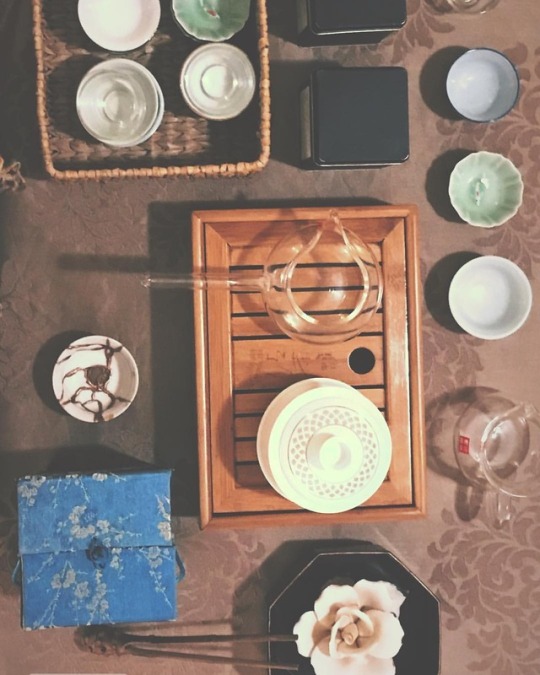
Teaware is pleasant to arrange. I think I treat setting up my tea service the same way I once treated setting up my dolls or teddy bears... although I never really had teddy bear tea parties. Perhaps I set them at the tea table and made tarts out of play doh on construction paper china... and then they would sit there, pretty and perfect. I didn’t know how to “play” tea... I knew how to drink tea, and now I know how to pour tea, or I am cultivating my gong fu cha, or however you want to put it... the more things change, the more they stay the same, eh? 🦉🍵🦔 #tea #teaware #teaaddict #teaparty #gongfucha #cha #gongfuchaatx #teawitch #witch #witchesofinstagram #witchesofaustin #teaserver #teapourer #aspienwoman #aspie #teaislife #teddybearteaparty #teddybeartea #gaiwan #kintsugi #teapet #chapan #gongdaobei #flatlay #chabei #teacup #teacupsofinstagram (at Guan Yin Tea House)
#witch#teaislife#witchesofinstagram#teapet#teddybearteaparty#teaserver#gongdaobei#teaparty#teaware#chabei#teawitch#cha#teapourer#gongfucha#teddybeartea#gaiwan#gongfuchaatx#flatlay#teacup#aspienwoman#teacupsofinstagram#teaaddict#chapan#tea#aspie#witchesofaustin#kintsugi
1 note
·
View note
Photo
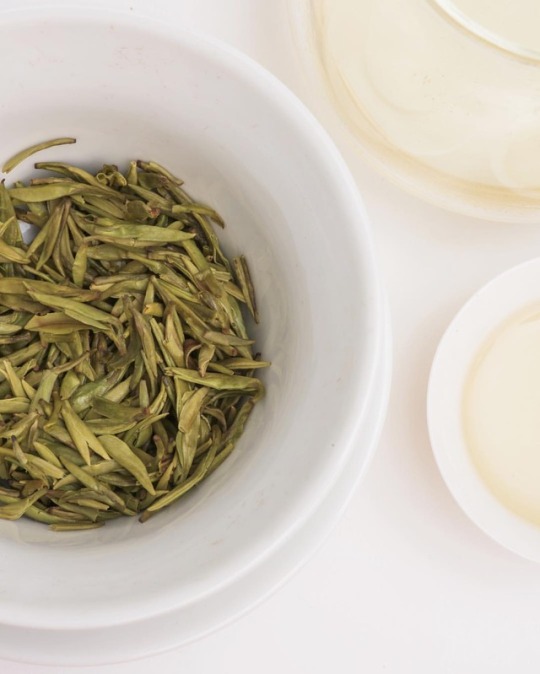
Huang Ya yellow tea from @westchinatea #yellowtea #cha #gaiwan #tea #gongfucha #gongdaobei #minimal (at Bedford–Stuyvesant, Brooklyn)
1 note
·
View note
Video
Swirling eddies in my #ripepuer #gongdaobei (at Tea Journal)
0 notes
Photo

🖤Featured handmade pottery teaset from Museum of Crafts - Iron gilt. The whole teaset including one tea mill, one wood shelf to hold the tea mill, one faircup(Gongdaobei) and six tea cups. . 🖤Free worldwide shipping & gift box . 🖤This is a really special and creative teaset . The mill is such a simple and joyful equipment for the tea brewing. Simply put the tea and hot water inside the mill and turn the mill , the freshly brewed tea will flow into the fair cup and ready to share with your friends. . . 🖤No matter you or your friends are tea lovers for long or new to the joy, this tea mill will certainly be a surprise and be such an interesting set for your teatime! A definitely awesome gift for any tea lover. . . Tea mill : 13.8 x 11.3 cm Woodshelf: 13.8x7.6cm Faircup: 14.1x4.5cm/150ml Teacup: 5.2x3.8cm/ 50ml . . Each piece in the teaset is handmade and exclusive, the glaze even the shape. The teaset will be cosily packed in gift box shown in the pictures.(The details may be different due to stock while it will always be presentable) https://www.instagram.com/p/B1fx2m6gDYT/?igshid=1b4bz73lm9waq
0 notes
Text
Gongfu Brewing
Among internet tea people, gongfucha (功夫茶) is often represented as the best, most authentic method of brewing loose-leaf tea. New tea people tend to fetishize gongfu brewing and overemphasize its ritual. (On r/tea especially, posts asking about the gongfu “tea ceremony” are fairly common.) The more experienced you get, however, the more you start to think of gongfu as just one of many methods available to brew the best possible cup of tea. As a relative newcomer to gongfu tea, I’ve found it difficult to know what information is true and what can be safely ignored. To that end, I want to summarize the research on gongfu brewing and dispel some of the myths that I’ve encountered.
Gongfu is Old
Gongfucha (literally, “making tea with skill”) is often misrepresented as a traditional brewing style with ancient origins. In reality, however, the historical record suggests that gongfu brewing developed within the past 200 years.
There are two excellent academic sources on the history of gongfu brewing, both by Lawrence Zhang (2012, 2016). According to Zhang, contemporary gongfucha developed in 1970s Taiwan, though its origins are in an 18th century brewing style local to the Chaozhou region of China (bordering Fujian and Guangdong).
The earliest written mentions of gongfu brewing were by gastronome Yuan Mei in 1792 and bureaucrat Yu Jiao in 1801. Yuan, for example, described the practices of tea drinkers in the Wuyi Mountains who used (quoting Zhang) “pots that held no more than one ounce of water and drunk from cups no bigger than a walnut.” In 1937, translator Lin Yutang wrote that gongfu brewing was “an art generally unknown in North China” practiced only by “connoisseurs and not generally served among shopkeepers” (Lin 1940: 218). Zhang notes that prior to the 1960s, gongfu brewing was virtually unknown outside of Chaozhou.
In 1957, Weng Huidong wrote the “first dedicated treatise” on gongfu brewing, which, though never published, was meant to spread the local brewing style beyond southern China. Weng’s descriptions mirror what contemporary tea drinkers think of as gongfu brewing—high leaf to water ratios, whole-leaf tea brewed in small clay teapots, multiple quick infusions. Still, gongfu brewing was only a local custom and not well known (let alone practiced) outside of the Chaozhou region. Even as late as 1999, Chinese books on Chinese tea customs only mentioned gongfucha in passing. Again quoting Zhang (2016:55):
To the rest of China gongfucha was interesting, but no more so than any other regional tea culture; it was novel for its unique procedures and implements. There were many other traditions in China for tea drinking.
The misconception that gongfucha has ancient origins derives from two sources. First, Lin’s writings on gongfu brewing include references to traditional Chinese tea culture (and philosophy) in an attempt to “emphasize that [gongfucha] was a part of the canon of traditional Chinese cultural practices“ (Zhang 2016:54). Still today, gongfucha is incorrectly associated with early writings on Chinese tea, such as Lu Yu’s The Classic of Tea. More recently, the confusion can be attributed to the introduction of chayi (“tea arts”) and chayiguan (“tea art houses”) in 20th century Taiwan. Zhang writes that Taiwanese tea house owners claimed that “they were recovering a lost tradition by means of emphasizing the pureness of tea drinking as an activity” (2016:56). Moreover, in the 1980s, Taiwan used chayi to lay its political claims as the legitimate China and keeper of authentic Chinese traditions (see also Kim and Zhang 2012).
Since the 1990s, many have tried to locate gongfucha in an historical narrative of Chinese tea drinking, despite the evidence of its newness. Contemporary gongfu brewing is represented as an extension of past practices “with one dynasty’s tea practice seen as building on practices of previous dynasties and culminating in modern tea arts” (Zhang 2016:60). It is, as Zhang argues, an “invented tradition” (Hobsbawm and Ranger 1983).
Gongfu is Traditional
Similarly, gongfu brewing is often described as the traditional method of brewing tea in China. As noted above, this is not the case, with most tea in China being drunken either “grandpa style” or “western style,” using less leaf, more water, and longer infusions.* If anything, the history of gongfu brewing has proved that this brewing style is thoroughly not traditional:
Zhang (2016) points out that brewing with whole-leaf tea really only began in the Ming dynasty (1386-1644). Prior to then, in China tea would have been ground to a powder and whisked—like Japanese matcha—or “powdered and ground up, then boiled in water, with added fragrance such as spices and salt”—like Tibetan butter tea. In fact, the tea that Lu Yu described in The Classic of Tea would be unrecognizable to most tea drinkers today.
Moreover, as outlined above, contemporary gongfu brewing developed in 1970s Taiwan and was heavily influenced both by Japanese senchadō (“the way of steamed tea”) and Mainland tea culture (Kim and Zhang 2012; Zhang 2016). The development of gongfu brewing is a direct consequence of blending these various tea cultures. This fact, however, does not fit the mythology surrounding gongfucha, and is often left out of contemporary accounts. To this effect, Kim and Zhang (2012) write that:
Such omission is quite common among newer publications on tea, and reflects a growing sense that Chinese chayi, or as it is increasingly called, chadao, has always been in existence in China for over a thousand years. [...] Even Chinese works that discuss Chinese and Japanese transmission in tea culture tend to emphasize China as the source and Japan as the recipient and developer of tea knowledge, but rarely mention that the direction of transmission also occurred in reverse.
Ironically, those who practice gongfucha for its tradition (or aesthetics) are actually engaging a much younger practice; whereas an older, more authentic approach is to treat gongfu brewing simply as a means to an end.
* For western style, brew 5g tea/350ml water for 2-3 minutes in a mug or pot.
Gongfu is Complex
Calling gongfu brewing a “ceremony” has caused a lot of confusion among newer members of the tea community. Even Wikipedia gets it wrong. Often this misconception arises when people mistakenly equate gongfu brewing with Japanese chadō, which does have a ceremonial quality. Other times, I think it is simply the fetishization of Chinese tea culture.
This misconception has two parts, equipment and ceremony:
Though some gongfu enthusiasts do use large, complex tea sets—e.g., this one, which costs $300 and includes 40+ pieces—gongfu brewing can be done very simply. (See also MarshalN’s semi-sarcastic post on “essential teaware”.) For example, to brew gongfu at home for myself, I use only a gaiwan, a small mug, a tea towel, and a medium sized bowl for waste water. My tea set cost $20.
The “ceremony” of gongfu brewing need not be complicated either. While some people prefer to brew gongfu with large, flowing gestures and what appears to be significant difficulty, this is neither necessary nor particularly useful. Instead, it is best to brew quickly, carefully, and as efficiently as possible.
When I sit down for a solo gongfu session, I attempt to make the best tea that I can with as little fuss as possible. I start by preparing the table. I lay out a tea towel, on top of which goes a gaiwan, a small mug, and a bowl for waste water. The gaiwan holds 100ml of water and the mug holds about two infusions, so there is no need for a gongdaobei (“fairness pitcher”). I measure out my tea—using a gram scale—and heat my water—using a variable temperature electric kettle. I use water from the tap or, alternatively, from a filtered pitcher. Once all of my equipment is assembled, I start brewing.
Gongfu is Best
Lastly, it is a mistake to think that gongfu brewing will always be the best method of drinking a particular tea. In fact, for some teas, gongfu is a poor brewing method and returns substandard results. Imagine trying to gongfu a CTC-style Assam—chopped leaves will brew strong and bitter—or an Earl Grey—the first few infusions will taste heavily (almost chemically) of bergamot. On the other hand, some teas that I love to drink gongfu have fared poorly when I’ve tried brewing them western or grandpa style. Thus, if you only brew gongfu (or only western), you can end up with disappointing results. The trick is to match the tea with the right method, and then dial in on the specific parameters. For most tea people, figuring out how to brew our favorite teas is almost as important as sourcing those teas in the first place.
One trick that I use when selecting a brewing method is matching it with the “traditional” origin of the tea that I'm drinking. So, Chinese greens like Longjing (”Dragon well”) or Taiwanese oolongs tend to get brewed gongfu with a ceramic gaiwan or grandpa style in a tall glass. Alternatively, CTC teas from India or Sri Lanka and traditional English flavored teas will always get brewed western style in a mug or pot. I almost always brew Japanese style green teas in a kyusu, which is a whole other process. Consequently, the style of tea matters more than where the tea was actually produced. So, Indonesian oolongs made in traditional Chinese or Taiwanese styles will still be brewed gongfu or grandpa style. Likewise, if your Taiwanese oolong gets severely broken (or if you are down to only fannings), it will be better brewed western style.
(Note: I cite MarshalN a lot in this post. He takes a very practical approach to gongfu brewing, which I tend to emulate in my own tea practice.)
5 notes
·
View notes
Text

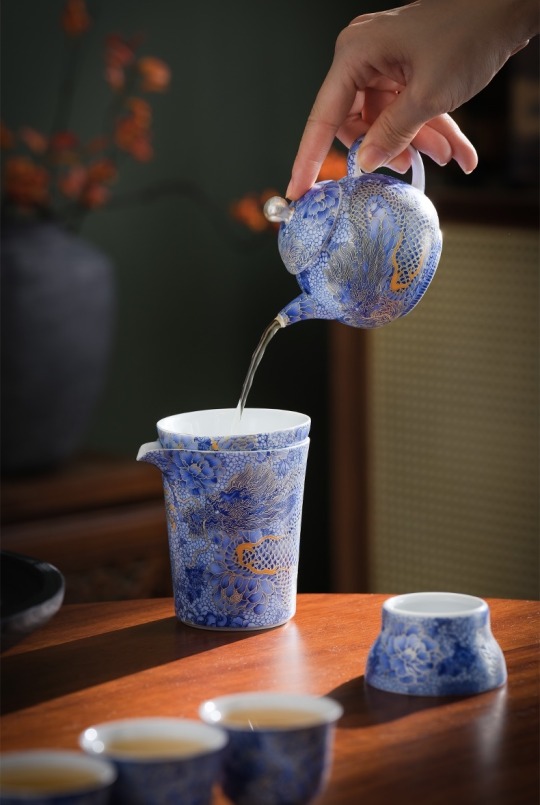
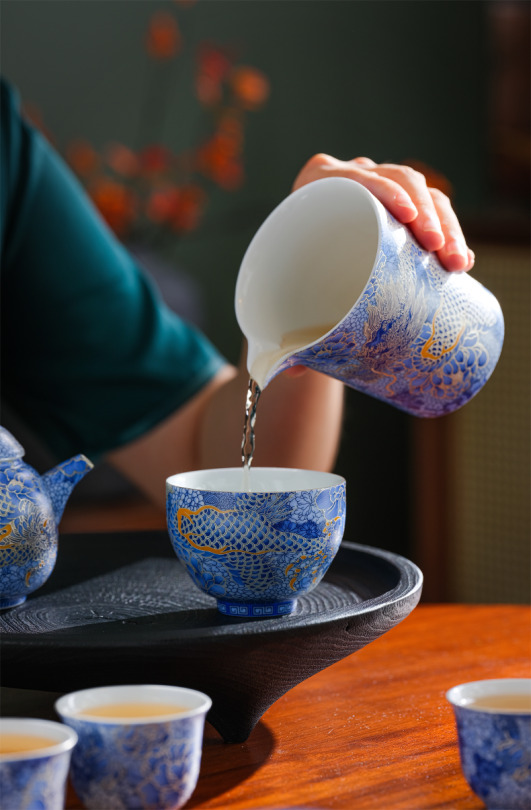

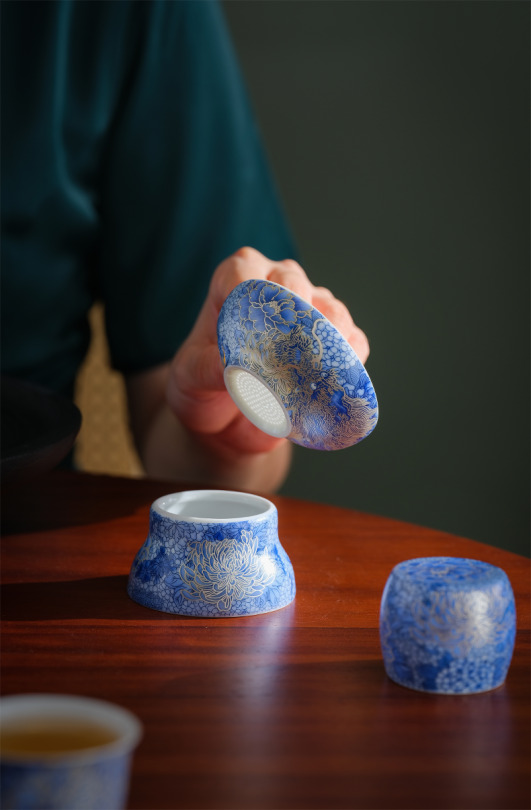

Enjoyable, for sure, and what you'd call memorable.
#lightandshadow#morimatea#teapot#teacup#chaxi#teaceremony#tea#teatray#teatime#beautiful#blue and white#gongdaobei#chinese tea#mastercraft#craftmanship#amazing art#fascinating#charmed life#tea lover#tealoversunite
7 notes
·
View notes
Photo
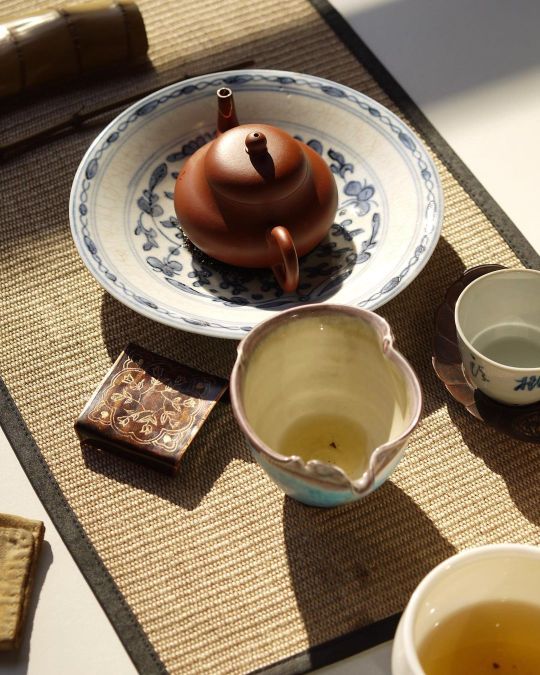
Sit, have a cup of tea, and enjoying sunbathing. . . . #sunbathıng #sunbathingtime #tea #teatable #havetea #chinesetea #japanesetea #gongfutea #gongdaobei #faircup #tea2go #teapots #zisha #teatrays #teascoop #ceramitique #bestceramics (at Tai Wu Tang) https://www.instagram.com/p/Cck5U3yrpBW/?igshid=NGJjMDIxMWI=
#sunbathıng#sunbathingtime#tea#teatable#havetea#chinesetea#japanesetea#gongfutea#gongdaobei#faircup#tea2go#teapots#zisha#teatrays#teascoop#ceramitique#bestceramics
0 notes
Text
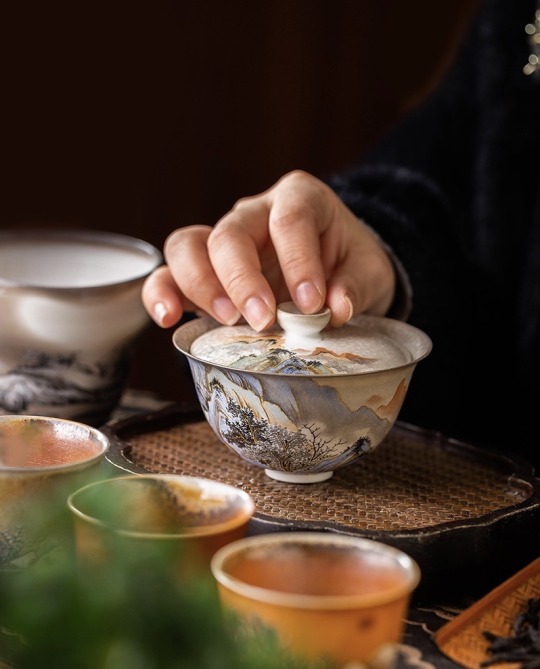

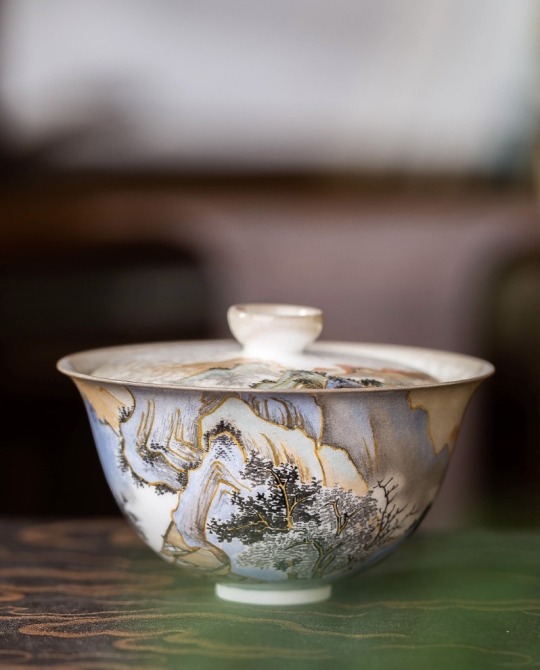


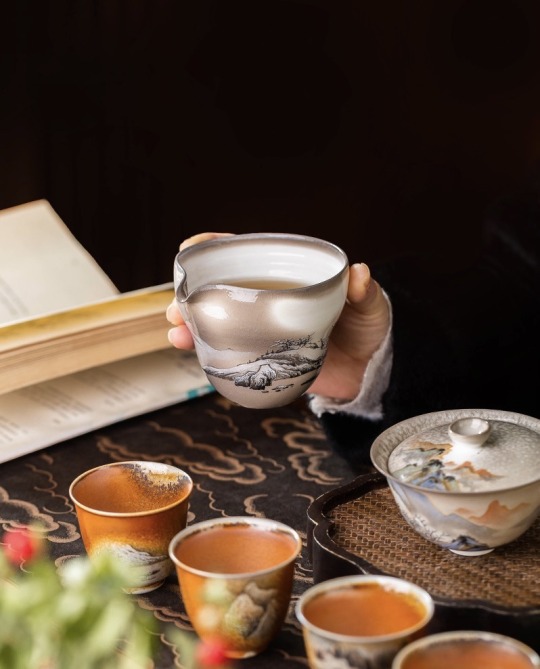
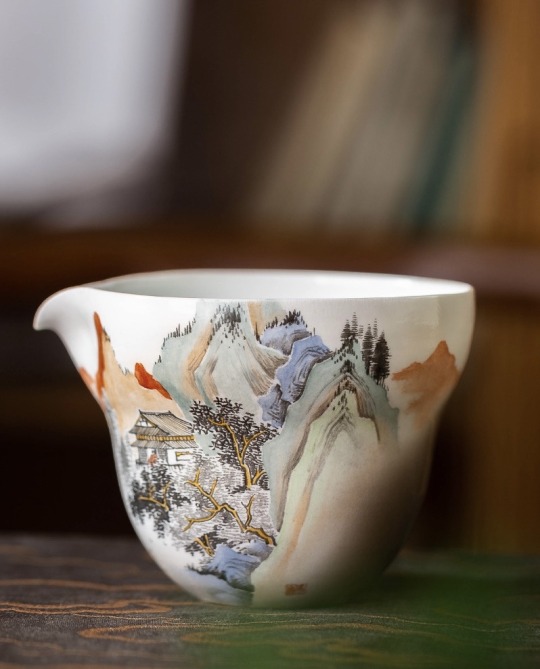


Every detail of the Gaiwan, its painted decorations were to be the finest ever created.
#chaxi#tablecloth#morimatea#gaiwan#teabowl#gaiwanaddict#gaiwantea#gongdaobei#faircup#gongbei#painting#paintingingold#traditionalart#chineseculture#handpainted#handicrafts#greattea#rhyme#fascinating#originality#original art#ingenuity#inheritance#spirituality#absolutely obsessed#absolutely beautiful#enjoyable#stunning#tealoversunite#fineness
29 notes
·
View notes
Text
At least once a day…taking it all in, enjoying the quiet, enjoying a cup of your favorite tea while resting your body.
#goldencup#golden#cuplover#kungfumaster#gong fu cha#teamaster#yixingteapots#gongdaobei#zisha#teapot#rocktea#oolong tea#teaspecialist#morimatea#teacup#tea#teatime#beautiful#teatray#teaculture#teagirl#slowtime#ceramiccraft#decoration#ornaments#incense sticks#incense holder#tea room#teahouse#relaxingmoments
2 notes
·
View notes
Text

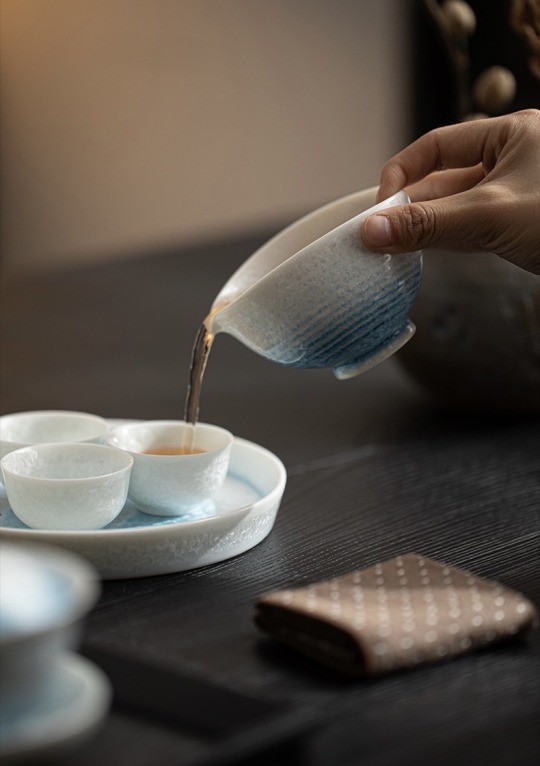

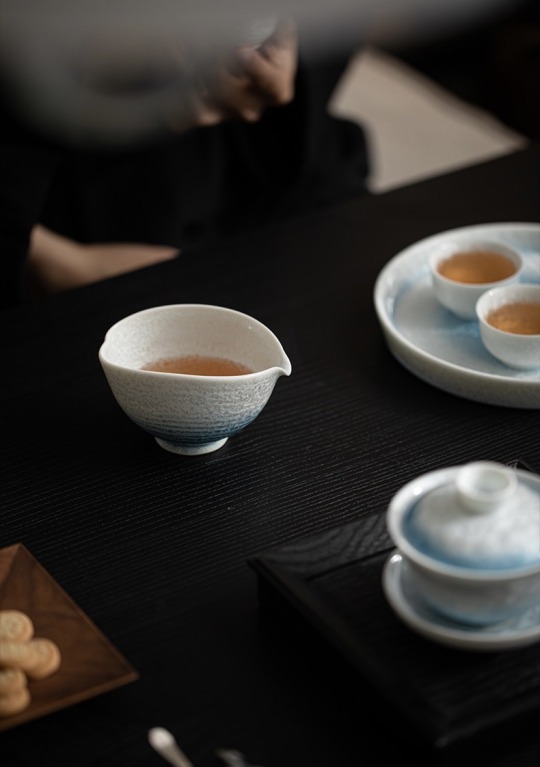

Exquisite tea set is an indispensable part of the life a tea lover.
#teatimepoetry#morimatea#teacup#tea#teatime#teatray#beautiful#morningteatime#gaiwan#vintage teacup#vintage style#gongdaobei#faircup#cupholder#delicioustea#tealoversunite#amazing art#traditional art#charmed#tea bowl
5 notes
·
View notes
Text
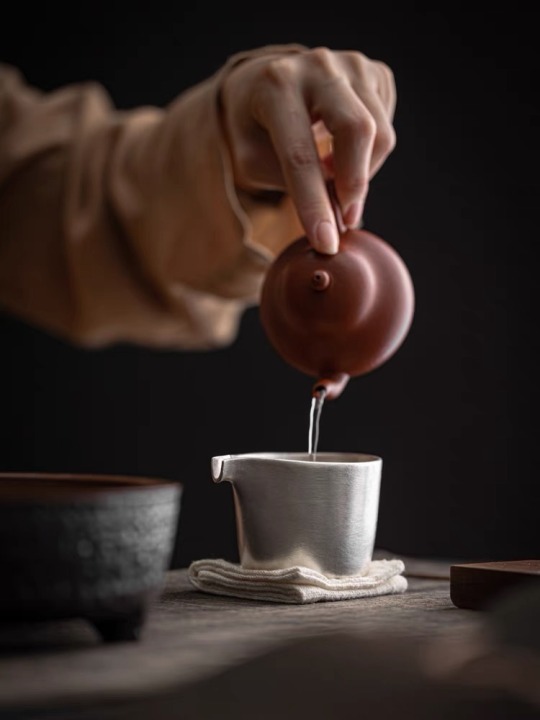
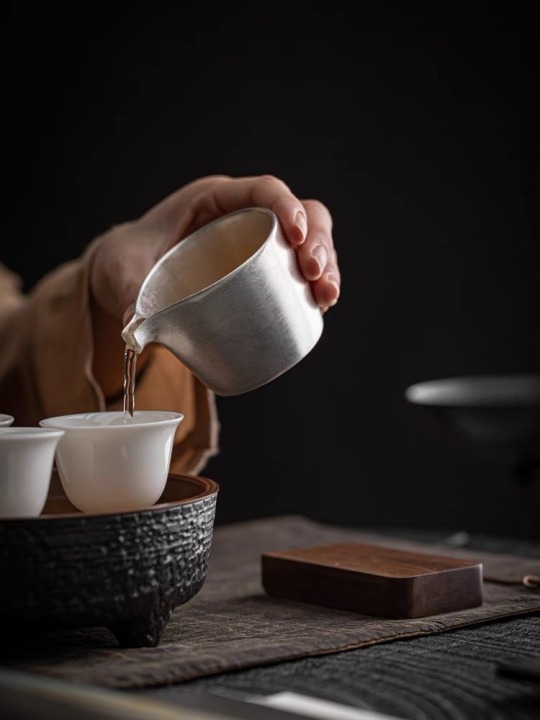


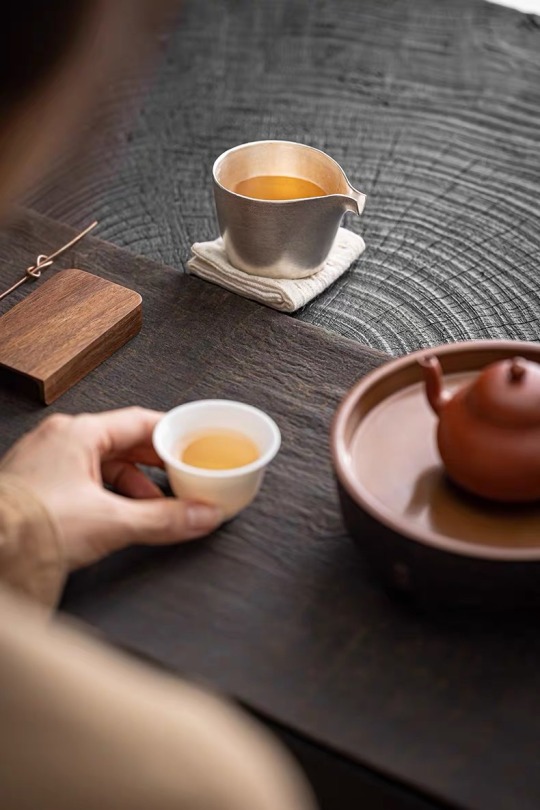

This is your life – love it, live it.
#teatimepoetry#morimatea#teapot#teacup#tea#beautiful#zishahu#purpleclay#teaboard#chadao#chaxi#kungfutea#gongdaobei#charming#tealife#tealover#enjoyit#quiet moments
3 notes
·
View notes